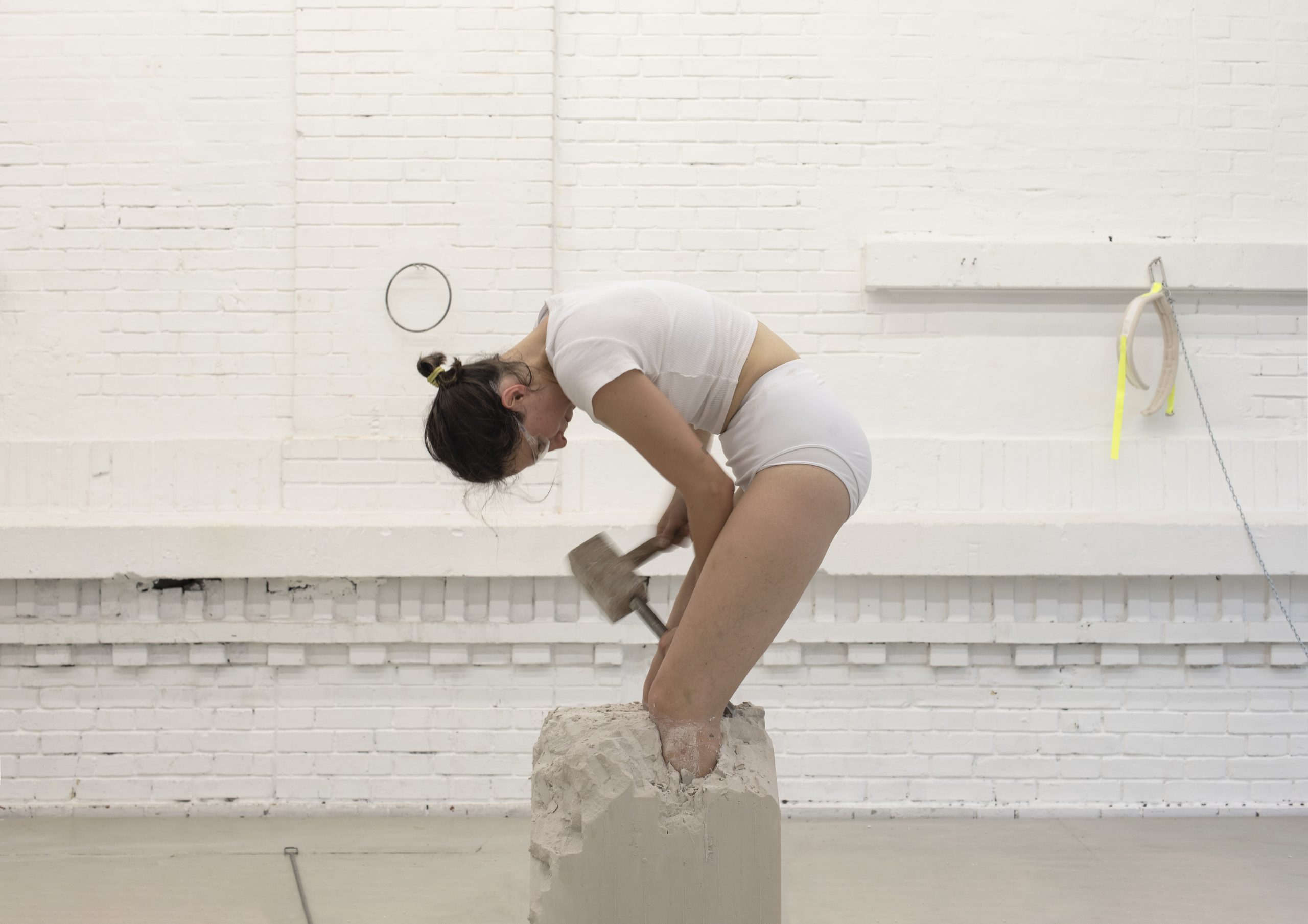Durrieu interrogates the configuration and mutation of what is called identity as expressed in the body, discourse, and the constant interaction with others. Her production unfolds in and between sculpture and performance—a continuum she conceives of as situations. In them, the artist places emphasis on the essential presence of the body as meeting point and bridge to the intuitive, the emotional, and the spiritual. In her work, the functionality of things is constantly reexamined and radically questioned to give rise to works with ironic and fitful humor as well as works that inhabit the angst of loneliness and alienation resulting from control. The artist corporealizes inert matter by treating it like a sentient surface. She “sculpturizes” the body by imposing conditions on it. Her sculptural objects are often used as tools in performances that implicate her own body, as well as the bodies of collaborators and the audience, which is often invited to participate.
One recurring element in her production is written instructions. Inserted in the work, they tell the viewer how to relate to the piece physically, indicating usually forbidden acts like taking the work apart, touching it, or climbing on top of it. The viewer is thus induced to establish a different relationship with the work, the exhibition venue, and even the public space. The artist explains that the use of the imperative mood in her works is an attempt to evidence the forms of cruelty, harshness, and violence at play in the explicit and implicit norms that shape our perceptions and behaviors and our public and private habits. It is also an attempt to open up spaces of freedom within those logical, formal, and linguistic systems. Another cornerstone of Durrieu’s art is reworking notions of intimacy.
This is particularly patent in works that entail contact with areas of our bodies we tend to protect, zones often associated with its vulnerability. No less important are works that formulate contact between a body and an object, conceived as another body. These works are soft or oily to the touch and include elements like handles or straps that condition behavior. A number of her works address the place women are assigned in society and attempt to upset gender binaries and their cliches and stereotypes in a patriarchal society.


 Durrieu Sofia
Durrieu Sofia